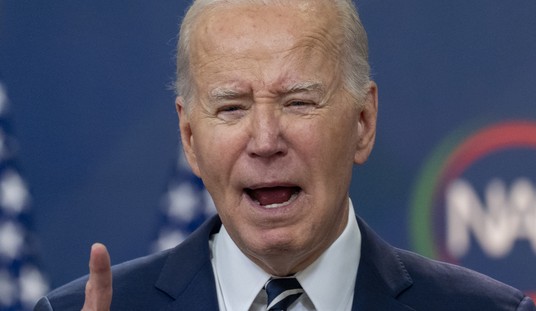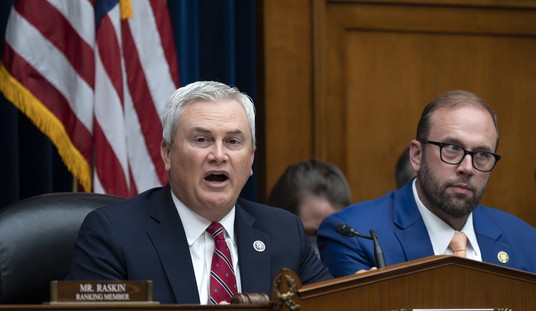By Amy Oliver Cooke and Michael Sandoval
When it comes China, President Barack Obama’s State of the Union Speech last month was nothing more than a rhetorical exercise from the political pied piper, who, along with his supporters, believes his own words magically alter reality. He is oblivious to his own hypocrisy and frighteningly disconnected from the consequences of his policies. The Chinese probably love him for it.
Obama spoke of “American energy,” but his policies encourage reliance on unpredictable regimes like China and turn away from friendly trading partners.
Obama spoke of fairness, criticizing China for subsidized manufacturing while his policy is to heavily subsidize industry with money borrowed from China.
His references to China appeared weak in the wake of China’s strategy to influence U.S. economic and military policy and to control the world’s energy resources.
The first found the president employing one of his favorite themes of late – fairness.
“And I will not stand by when our competitors don't play by the rules. We've brought trade cases against China at nearly twice the rate as the last administration _- and it's made a difference. (Applause.) Over a thousand Americans are working today because we stopped a surge in Chinese tires. But we need to do more. It's not right when another country lets our movies, music, and software be pirated. It's not fair when foreign manufacturers have a leg up on ours only because they're heavily subsidized.
Tonight, I'm announcing the creation of a Trade Enforcement Unit that will be charged with investigating unfair trading practices in countries like China.”
Fortunately, Obama, the economic superhero, saved us from those unfairly imported Chinese tires, but he fails to recognize the hypocrisy of his criticism, which brings us to the next reference to the one Bryan Ritterby and America’s “heavily subsidized” green industry.
Paying lip service to the justifiable outcry over the $535 million taxpayer-funded Solyndra bankruptcy, Obama promised to continue spending money we don’t have by pouring tax dollars down the renewable money hole.
“Some technologies don’t pan out; some companies fail. I will not walk away from the promise of clean energy. I will not walk away from workers like Bryan. I will not cede the wind or solar or battery industry to China or Germany because we refuse to make the same commitment here.”
Wasteful and heavily subsidized at home is acceptable but considered unfair if the Chinese do it.
Recommended
Beijing probably doesn’t care. China couldn’t ask for a better friend in the White House. Obama’s strategy on spending and energy have weakened the U.S. and strengthened the Chinese.
Debt and Spending
Obama may believe the threat of his “Trade Enforcement Unit” has the Chinese, the largest foreign holder of U.S. debt, shaking in their Mao suits, but remember that late last summer, following the U.S. credit downgrade, it was the Chinese warning the U.S. that the “good old days” of unmitigated spending were over, as Reuters reported:
“The U.S. government has to come to terms with the painful fact that the good old days when it could just borrow its way out of messes of its own making are finally gone,” China’s official Xinhua news agency said in a commentary.
The Los Angeles Times reported on the same commentary, “China called on the United States to ‘cure its addiction to debts’ and ‘learn to live within its means.’” More frightening because we owe so much to the Chinese, they are emboldened to reprimand the U.S. on defense spending:
‘China, the largest creditor of the world's sole superpower, has every right now to demand the United States to address its structural debt problems and ensure the safety of China's dollar assets,’ the commentary said.”
"If no substantial cuts were made to the U.S. gigantic military expenditure and bloated social welfare costs, the downgrade would prove to be only a prelude to more devastating credit rating cuts, which will further roil the global financial markets all along the way…”
We’ve used China as our payday lender to point where it has the right to demand we get our fiscal house in order by slashing spending in areas where it would be most beneficial to China. Obama responds with a threat to put China in the trade time-out chair.
Unfortunately, the Chinese are correct; the U.S. must address its deficit and debt crisis including cuts to defense spending, entitlements, and energy investments. At the same time, the Chinese are increasing their military spending, growing their sphere of influence in North America, Africa, and the Middle East, and expanding their control over global energy resources.
Fossil Fuel Energy Policy
Quick, which country exports the most barrels of oil to the U.S.? If you answered Canada you are correct. When Obama and others demagogue “foreign oil,” they besmirch our friendly neighbors to the north.
While Obama and his eco-irrational supporters fret over “foreign oil” and carbon footprints, China is eagerly expanding its energy footprint in North America as the Wall Street Journal recently reported:
“After tiptoeing into North America in recent years, Chinese companies have ratcheted up their energy deal-making as unconventional extraction methods—from oil sands to shale gas—have transformed the continent's energy market.”
Obama’s disastrous veto of the Keystone Pipeline served as a warning (and an insult) to Canadians who called it “a slap in the face to Canada…making Canadians rethink the relationship that they should break their dependence” on the U.S. and look to China as a willing trade partner, as Bloomberg reports:
“Prime Minister Stephen Harper is gaining support among Canadians for his plan to ship oil sands crude to China after President Barack Obama rejected TransCanada Corp. (TRP)’s $7 billion Keystone XL pipeline to the U.S. Gulf Coast.”
The Chinese will buy what Obama doesn’t want, which is why Harper is headed to China where he will meet with President Hu Jintao and likely “tout Enbridge Inc.’s proposed Northern Gateway pipeline that would let crude flow to Asia from Alberta’s oil sands via a Canadian port.”
The Chinese aren’t just looking to secure imports of Canadian oil; they want ownership so they can have more influence over global supply and demand. “Two of the largest acquisitions of Canadian oil and gas companies last year were driven by Chinese companies,” totaling more than $2 billion each.
Remember, Chinese companies are state-controlled, and they’re after more than just Canadian resources including U.S. reserves and technology according to the WSJ:
“Recent government estimates indicate that China might have more gas locked up in shale than the U.S…Chinese companies have bought front-row seats in the U.S. development boom by paying billions of dollars recently for stakes in oil and natural-gas projects across America, from Michigan to Texas.”
Those “front-row seats” are the perfect place to learn our technology, which they intend to take back home. When Obama and environmental left regulate hydraulic fracturing and directional drilling out of existence under the guise of “safety”, the Chinese will be well-positioned to expand drilling in China and other countries that wish to take advantage of their natural resources.
Renewable Energy Policy Leans Heavily on China
The Department of Energy’s (DOE) December 2011 “Critical Materials Strategy” update continues to acknowledge the stranglehold on rare earth elements (REE) production by China—the country provides 95 percent of the REEs currently mined, processed, and fed into the global supply chain for a variety of technological purposes. The DOE report targets the use of REEs in many forms of renewable energy applications, especially the permanent magnets used to generate energy in wind turbines, or propel electric drive vehicles.
The DOE’s market assessment contains cautionary language due to the lack of “opacity” or transparency from the Chinese near-monopolies on many of the REEs critical to global (and U.S.) technological demands:
“As producer of more than 95% of the world’s REOs [rare earth oxides], China has the ability to significantly influence market dynamics. Its imposition of quotas and export duties has decreased supply and caused increases in the prices of a number of rare earth elements. At present there is little clarity or predictability about China’s rare earth production and export policies, which sends uncertain supply signals to the market and can disrupt future investment decisions by downstream consumers. Additionally, there are significant data gaps or uncertainties with respect to Chinese reserves and resources, production and consumption. Some of this information is collected by China’s government ministries, but it is not disseminated.”
Centralization brings the ability to manipulate the market, as China has done, by reducing rare earth exports at its discretion, in an effort to control prices.
But centralization by a handful of producers within China, combined with the growing vertical integration of multiple steps of the production process, further concentrates the production of REEs. The DOE’s own estimates of barriers to entry for new REE sources put the development of so-called “greenfield” projects at more than $1 billion each, with at least ten years or more required to bring products to the supply chain at the “upstream”—later stages—of production.
Capital investments and permitting waits notwithstanding, rare earth-related human resources have disappeared within a generation. In just the past 30 years, the DOE acknowledges the technical expertise related to REEs once possessed by the U.S. has eroded by an astounding 94 percent:
“As the United States was once the world’s leading producer of rare earth materials, the United States was also once a leader in rare earth technical knowledge.
It is estimated that prior to 1980 rare earth mining and related industries employed approximately 25,000 people in the United States, with 3,000-6,000 holding college degrees in science or engineering. Current estimates are that 1,500 people are employed throughout the U.S. rare earth industry including 200-400 persons holding college degrees in science or engineering (Gschneidner 2011).”
Green Not So “Clean”
Proponents of renewable technologies tout the “clean” nature of the energy sources—wind turbines and thin-film solar cells—that require a great deal of REEs in the critical components that generate the energy output, including known carcinogens like cadmium. Chinese standards of environmental concern are, to say the least, not exactly Greenpeace-friendly, and a recent spill in southern China affected enough residents that the mitigation efforts to contain the contamination garnered international news at the end of January—via the New York Times:
“Officials in southern China appear to have averted environmental calamity by halting the spread of a toxic metal that had threatened to foul drinking water for tens of millions of people, the state media reported Monday.
Officials said they had successfully diluted the concentration of cadmium, a poisonous component of batteries, that [sic] has been coursing down the Longjiang River in the Guangxi Zhuang Autonomous Region.”
Used in a variety of applications, including solar cells and batteries, cadmium is a toxic metal, and “poisoning can cause kidney and liver damage and weaken bones.”
China’s less-than-sterling ecological record has produced this result:
“Despite what appears to have been a disaster avoided, the episode highlighted China’s continuing struggle against contamination of its waterways. The Ministry of Environmental Protection has acknowledged that half the nation’s rivers and lakes are unfit for human contact, and news reports of chemical and oil spills are commonplace here.”
According to the research of Nanjing Agricultural University, ten percent of the nation’s rice supplies “contained excessive cadmium levels,” with some southern provinces observing 60 percent of their rice samples exceeding national standards for potential cadmium poisoning.
In other words, President Obama’s call for lowering foreign dependence on oil in turn increases foreign dependence on REEs controlled by China. This requires the cooperation of Chinese-based companies with little in the way of demonstrated business transparency and Chinese government regulatory agencies more concerned with covering up ecological disasters than the health of their people. Unless forced by the sheer magnitude of potential harm, as the above spill would have affected millions downstream in places like Guangzhou and Hong Kong, Western media rarely reports such ecological contamination.
China’s state media heavily censors outgoing information, and regularly downplays events that would rival the BP spill in the Gulf of Mexico—as it has done here.
Obama would merely seek to exchange one dependency—petroleum—for another—rare earths. Only this time, the supply chain is concentrated in one country, rather than distributed among several.
Conclusion
Chinese investors continue to snap up struggling U.S. renewable energy companies like Colorado-based Ascent Solar, which narrowly averted a Solyndra-like collapse by pulling its $275 million DOE loan guarantee application in 2011.
Obama’s administration has not only subsidized many of his top bundlers’ investment vehicles, as they did with Solyndra, but provided incentives in the form of tax credits, loan guarantees, grants, and other subsidies to renewable energy companies that are charged to the nation’s credit card through debt issued, you guessed it, to China.
The Chinese can afford to subsidize their own renewable companies and undercut U.S. competitors, something that Obama decries, when the U.S. provides them a steady flow of green, renewable cash.
They are probably hoping for four more years.
Amy Oliver Cooke is the founder of Mothers Against Debt. She is also the director of the Colorado Transparency Project and the Energy Policy Center for the Independence Institute. She can be reached at amy@i2i.org. Michael Sandoval is the Managing Editor of People’s Press Collective and a former political reporter for National Review Online.

























Join the conversation as a VIP Member